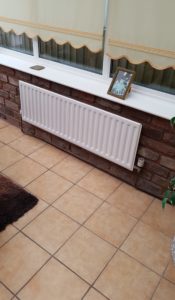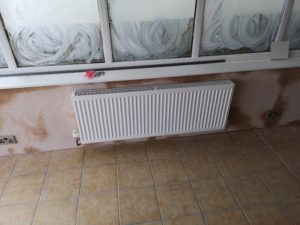I can’t remember how many times I’ve been asked why a radiator or two are not working or why a radiator takes longer to heat up than others or why a room is colder than the others, or why a radiator doesn’t get as hot as others. For these scenarios we would make sure the radiator valves are working properly, then we would need to determine if there could be a blockage in the pipes and one question we would ask, if it isn’t obvious is “has this radiator been added onto the system after the original heating system was fitted?” This scenario would arise from having an extension with new rooms with radiators in them, or some renovations where radiators have been changed.
If the answer is “yes” and it was proven that the issue is not the radiator valves or a blockage in the pipework, we would then need to find out how the radiator has been plumbed into the heating system. When we do find out the result 99% of the time is the 1st fix plumbing was not done properly. By this I mean either the pipe size is too small, or where the pipes branch off to the new radiator is plumbed in the wrong place, or there are too many bends in the pipe. Either way the end result is the customer will have to pay for the plumbing to be done again, and pay for the plastering to be done again and the painting to be done again because the person who did the work won’t come back, because they’ve already been paid in the summer when the work was done but you’ve only realised now because it’s winter, or something like that. Obviously I’m generalising on the scenario as I know there are good plumbers who do pay for their mistakes, and there are some plumbers who don’t.
What you can do
There are laws in place which mean you could take legal action against the company involved but it’s not straightforward and you’ll need to get a solicitor involved etc, etc. Basically it’s a massive hassle.
If you are planning an extension or renovation make sure of the following:-
- Has the radiator been sized correctly? Otherwise the room won’t reach temperature.
- Has the length, diameter and number of bends of the supply pipes been calculated?
- Has the heating flow and return pipes been fitted properly? Some designer radiators specify the flow and return pipes must be fitted a certain way, otherwise the radiator will not work properly.
- Has the pipework been protected from corrosion?
If you make sure the above questions have been dealt with you have done all you can to have a properly working heating system, or at the very least won’t cost you an arm and a leg to rectify.
Below is a before and after picture of a radiator installation. The radiator in the room was undersized which meant the room was never warm in the colder months. For this job we had to fit larger pipes going to the radiator, then fit a larger radiator after the walls were plastered.


Pavlou Plumbers have years of experience in plumbing in heating systems properly so if you’re planning a renovation, extension or need a new heating system get in touch with Pavlou Plumbers.
